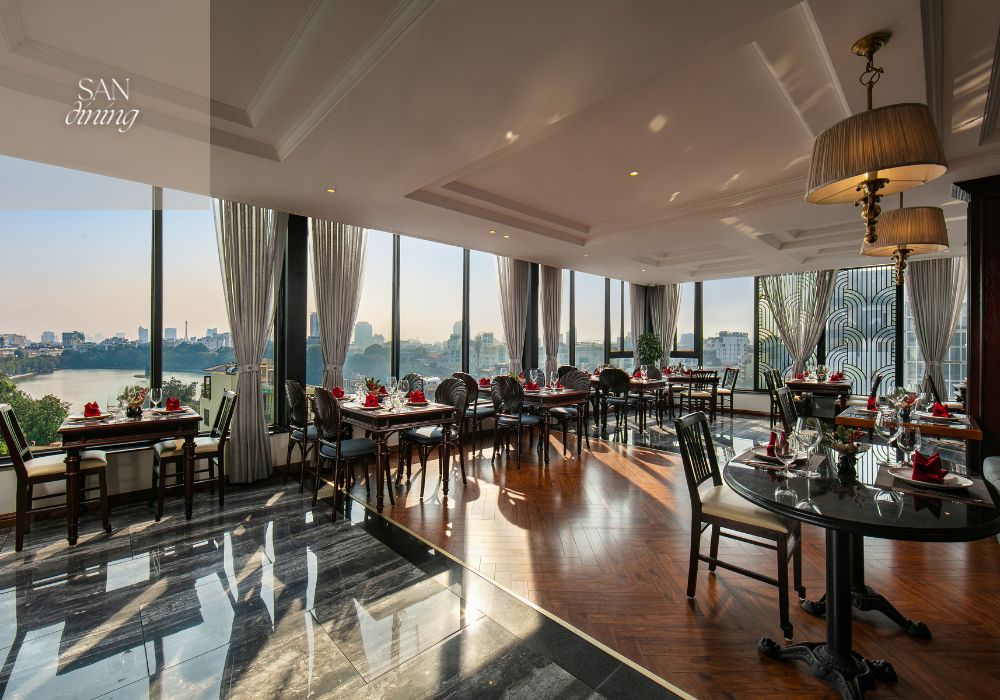Best Asian Restaurant Islamabad: Experience Flavors from Across Asia
Best Asian Restaurant Islamabad: Experience Flavors from Across Asia
Blog Article
Savor Authentic Oriental Cuisine With a Pan-Asian Spin for a Cooking Adventure
Beginning on a cooking journey through authentic Eastern cuisine, boosted with a Pan-Asian spin, uses an one-of-a-kind chance to explore the abundant tapestry of tastes that specify the region's diverse culinary customs. As you ponder these attracting dishes, take into consideration the social narratives and historical impacts that form them, each bite providing a tale waiting to be found. best asian restaurant Islamabad.

Exploring Pan-Asian Flavors
In the world of international gastronomy, Pan-Asian cuisine sticks out for its remarkable variety and the harmonious interaction of tastes from various Eastern cultures. This culinary technique celebrates the rich customs and distinct components found across the continent, creating a tapestry of tastes that is both fascinating and enjoyable. Secret to Pan-Asian cuisine is its capability to balance contrasting tastes-- sweet, salted, spicy, and sour-- while highlighting the freshness and quality of each component.
From the umami-rich soy sauce of Japan to the intense chili peppers of Thailand, Pan-Asian food offers a substantial combination of tastes. These aspects are frequently integrated in creative means, boosting dishes with layers of intricacy. For example, making use of aromatic natural herbs such as lemongrass and cilantro, usual in Vietnamese and Thai cuisine, includes a revitalizing brightness to dishes, while the incorporation of coconut milk supplies a creamy, rich texture.
The emphasis on fresh fruit and vegetables and fragrant seasonings makes sure that each dish is not just a banquet for the taste buds but also for the detects. Pan-Asian food welcomes restaurants to start a cooking trip, checking out the huge and varied landscapes of Oriental gastronomy with every bite.
Blend Dishes to Try
While Pan-Asian food is commemorated for its typical flavors, the contemporary culinary landscape is significantly embracing blend dishes that mix these classic aspects with influences from various other areas. This innovative method not just honors the rich heritage of Oriental cooking arts however additionally presents unique taste experiences that appeal to contemporary tastes.
An archetype of such a blend dish is the Korean-Mexican taco, where marinated bulgogi beef is wrapped in a warm tortilla, covered with kimchi and a hot gochujang-infused salsa. This mix marries the strong, full-flavored flavors of Korea with the dynamic, fresh aspects of Mexican food. In a similar way, sushi burritos have gained popularity, amalgamating the fragile virtuosity of Japanese sushi with the hearty, hand-held ease of a burrito, frequently including fusion ingredients like tempura shrimp and avocado with a drizzle of wasabi mayo.
One more notable dish is Thai curry ramen, which infuses the luscious, fragrant spices of Thai curry into the soothing brew of typical Japanese ramen, creating an unified mix that entices the senses. These combination meals prolong beyond mere novelty; they stand for a cooking discussion between societies, urging expedition and advancement worldwide of Pan-Asian food.
Crucial Components and Seasonings
To genuinely appreciate Pan-Asian cuisine, one must understand the crucial active ingredients and seasonings that create its structure. This diverse culinary style draws from an abundant tapestry of Asian practices, employing a harmonious mix of flavors and structures. Secret components consist of soy sauce, fish sauce, and oyster sauce, which pass on a tasty umami deepness vital to Eastern recipes. Complementary to these are rice vinegar and mirin, lending a fragile acidity and sweet taste.
Fragrant aspects are crucial, with lemongrass, garlic, and ginger being ubiquitous throughout different Pan-Asian dishes. These active ingredients offer a great smelling base that improves the complexity of tastes. Seasonings such as star anise, cardamom, and cinnamon introduce heat and character, echoing impacts from areas like China and India.

Food Preparation Techniques and Tips
Mastering the art of Pan-Asian cuisine needs experience with its distinct food preparation methods, each contributing to the dynamic tapestry of flavors this culinary custom is celebrated for. Central to these techniques is the stir-fry, a fast cooking technique that preserves the nutritional integrity and vibrant colors of ingredients. Making use of a frying pan, the stir-fry technique enables also warmth circulation, crucial for achieving the characteristic texture and flavor balance of Pan-Asian dishes.
An additional essential method is steaming, specifically widespread in Chinese food. This mild approach keeps the natural tastes and nutrients of components, making it suitable for fish and shellfish and vegetables. Dumplings, a beloved staple, typically gain from steaming, resulting in soft, succulent structures.
Grilling, likewise integral, presents great smoky depths to dishes such as Korean bulgogi or Japanese yakitori (Instagrammable restaurants Islamabad). This technique usually includes marinating ingredients, enabling tastes to pass through deeply prior to food preparation over an open flame or warmer
Last but not least, understanding the art of balancing tastes-- sweet, sour, salty, bitter, and umami-- is critical. Properly layering these aspects can elevate a meal from regular to extraordinary, offering a complicated and pleasing culinary experience that symbolizes the significance of Pan-Asian cuisine.
Eating Experiences Worldwide
Throughout the world, Pan-Asian cuisine offers an unparalleled eating experience, celebrated for its abundant tapestry of tastes and vivid presentations. This culinary phenomenon has actually gone beyond cultural borders, capturing the hearts and tastes of food enthusiasts basics worldwide. In cosmopolitan cities fresh York, London, and Sydney, Pan-Asian restaurants serve as fusions where culinary customs from Thailand, click over here Japan, China, and past converge, supplying restaurants with a diverse mix of dishes that highlight the area's variety.
The global charm of Pan-Asian cuisine lies in its capacity to supply both authenticity and development. Cooks skillfully wed traditional components such as lemongrass, soy sauce, and miso with contemporary techniques, resulting in dishes that are both familiar and refreshingly new. This combination permits diners to embark on a culinary trip that appreciates heritage while embracing modernity.
Additionally, eating experiences are boosted with attentively developed atmospheres that show the ethos of Pan-Asian looks. From minimalist Japanese-inspired interiors to lively Thai-themed spaces, each dining establishment supplies an one-of-a-kind atmosphere that matches the cooking offerings. Therefore, patrons are not simply consuming a meal however partaking in a cultural experience, making Pan-Asian dining an absolutely international phenomenon.
Final Thought
The expedition of Pan-Asian cuisine supplies an extensive understanding of the elaborate interplay of flavors and culinary traditions throughout Asia. By accepting fusion dishes such as Thai curry ramen and sushi burritos, the culinary journey not only highlights the flexibility of typical active ingredients yet also showcases cutting-edge modern techniques. This gastronomic journey, enhanced by cooking methods and crucial spices, gives an one-of-a-kind possibility to value the cultural variety and culinary creativity that specify Pan-Asian food on an international scale.
Embarking on a cooking journey with authentic Oriental food, improved with a Pan-Asian spin, offers an one-of-a-kind chance to explore the pasta near me abundant tapestry of flavors that define the area's diverse cooking practices.In the realm of global gastronomy, Pan-Asian cuisine stands out for its impressive diversity and the harmonious interplay of tastes from various Oriental societies. Trick to Pan-Asian food is its ability to balance contrasting tastes-- sweet, salty, spicy, and sour-- while highlighting the freshness and top quality of each active ingredient.

Report this page